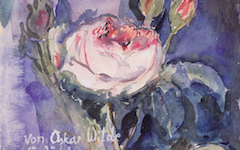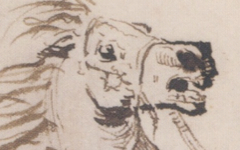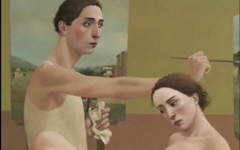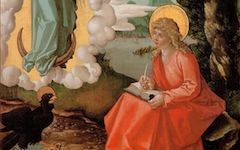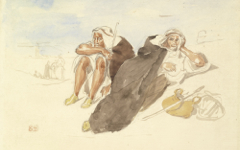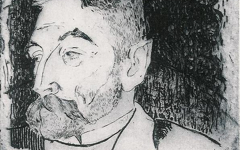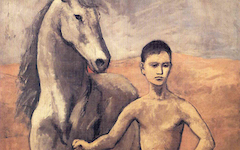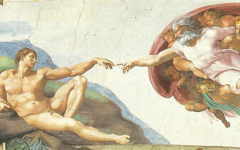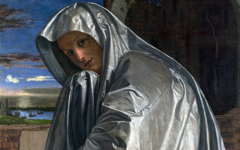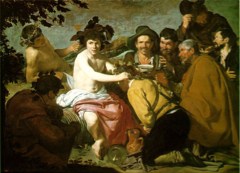Artist as Poet
One of several themes running through art concerns the artist's relationship with a great poet. He or she not only considers the poet a muse but identifies with him as well, aspiring to become as great in visual art as the poet is in literature. Michelangelo's widely acknowledged identification with Dante is the best known. Auguste Rodin thought similarly when he placed the well-known figure of The Thinker above his Gates of Hell. Rodin in calling the sculpture The Poet thought of it as a representation of both himself and Dante, two-artists-in-one thinking about (and thus creating) his own masterpiece which was inspired, of course, by Dante's own Inferno.
Most Recent Articles
All Articles (Alphabetical by Artist, then Title)
Learn how to deconstruct a portrait by Balthus using a few simple principles
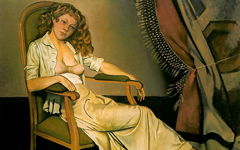
Balthus’ The White Skirt (1937)
A little knowledge of studios goes a long way to understanding art
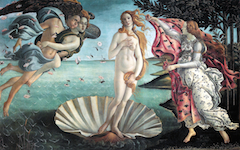
Botticelli’s Birth of Venus (1484-6): Part One
Is Degas' Little Dancer just a dancer, a study in realism? Or is she......?
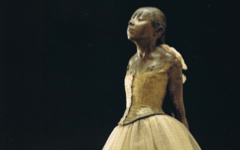
Degas’ Little Dancer Aged Fourteen (1879-81)
Sometimes the features which have not been seen are the most obvious
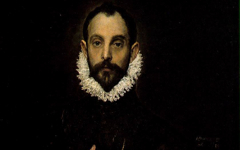
El Greco’s Knight Taking an Oath (1578-80)
Giorgione's Tempesta is considered one of the most important paintings in the history of art but, given the strangeness of the scene, has been subject to numerous interpretations over the years.

Giorgione’s Tempesta (c.1506-8)
How historical accuracy was not Leonardo's purpose in a portrait

Leonardo’s Portrait of Ginevra de’ Benci (c.1474-8)
Discover yet another way that artists convey their dual perception

Matisse’s Self-Portrait Sketching (1900)
When you discover what is underneath Picasso's early Blue Period paintings, the meaning changes...drastically.
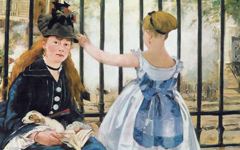
Picasso’s Harlequin (1901) and Blue Period
Learn about the mystery behind Picasso's name and the importance of artist's names in general
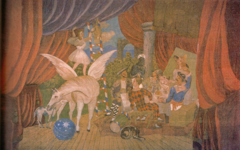
Picasso’s Parade (1917) and His Mysterious Name
See how Picasso in "copying" a portrait changes it into an image of his own thought process
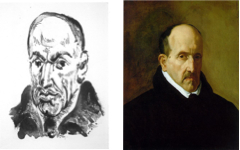
Picasso’s Portrait of Gongora (1947)
The pose in this portrait by Raphael, with the head turned upwards and away, has been described as a type suggesting that the Pope's secretary is listening to or witnessing divine revelation.

Raphael’s Tommaso Inghirami (c. 1511)
Still-lifes by great artists may seem simple or devoid of meaning, especially when compared to figure paintings, but they rarely are either simple or meaningless.
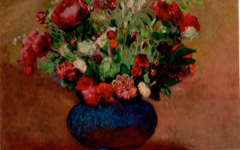
Redon’s Pavots et Oeillets de Poète… (c.1906)
See why knowledge of a painter's practice can lead to a different, and more accurate, interpretation of a scene.

Van Gogh’s Weavers (1884)
The magic of visual illusion was not an invention of the Surrealists; it has been an integral part of art for centuries.
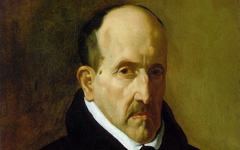
Velazquez’s Portrait of Luis de Góngora (1622)...and Picasso’s.
© Simon Abrahams. Articles on this site are the copyright of Simon Abrahams. To use copyrighted material in print or other media for purposes beyond 'fair use', you must obtain permission from the copyright owner. Websites may link to this page without permission (please do) but may not reproduce the material on their own site without crediting Simon Abrahams and EPPH.

